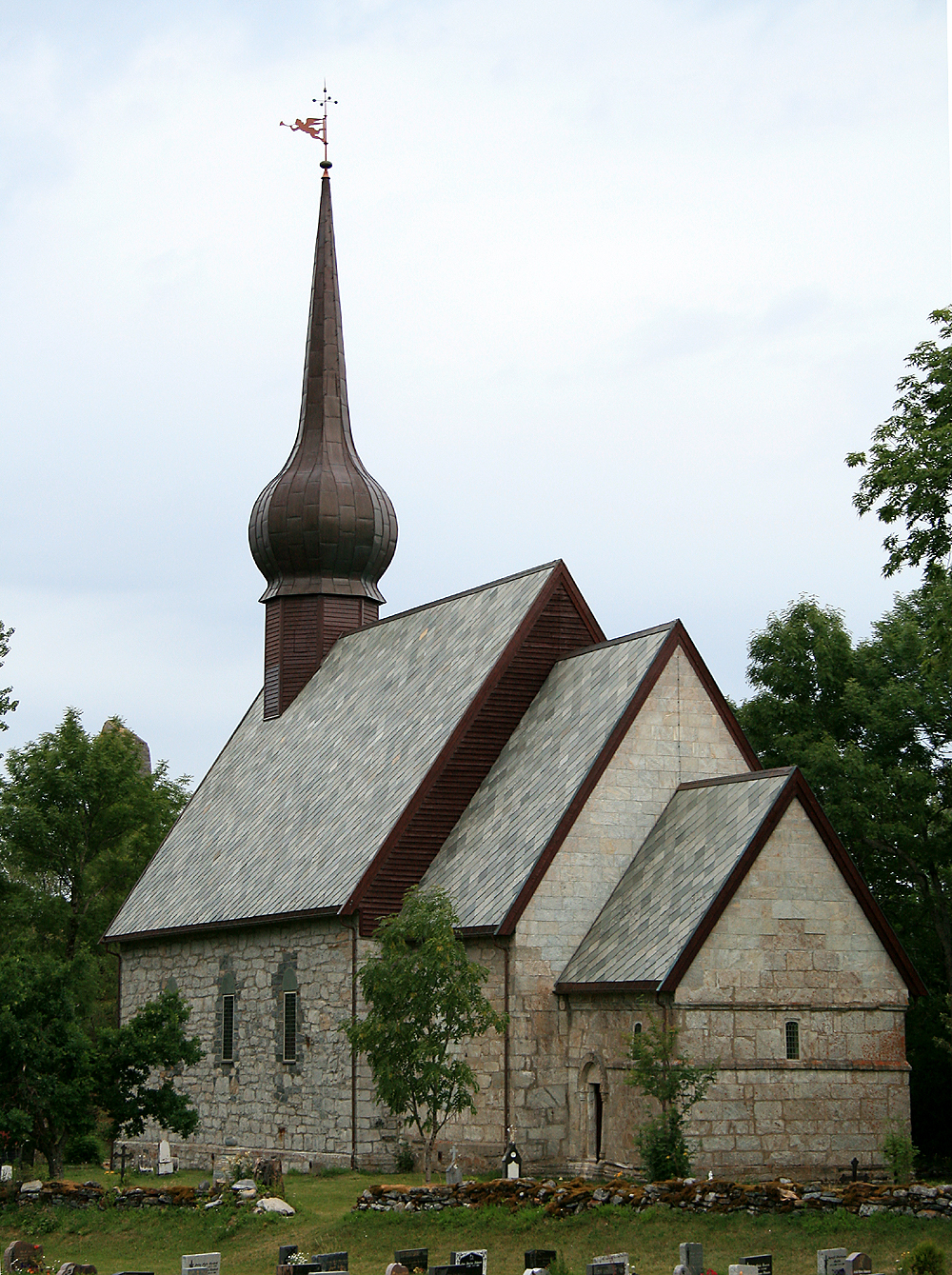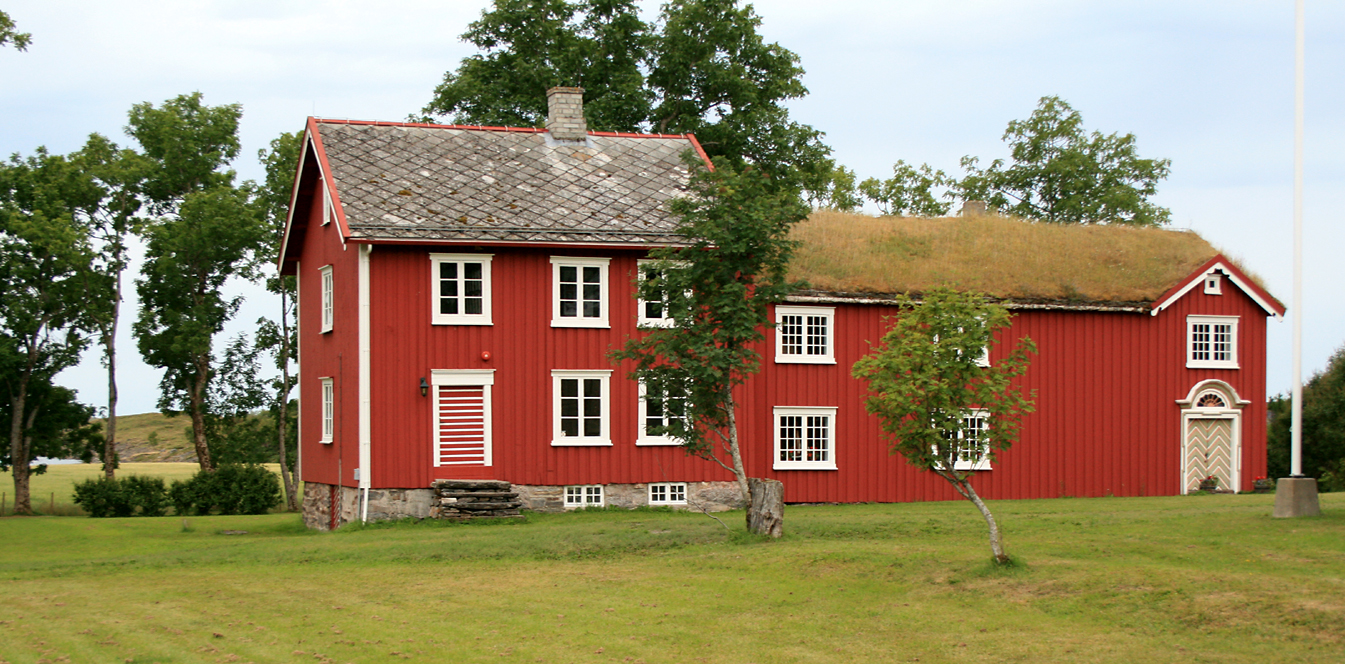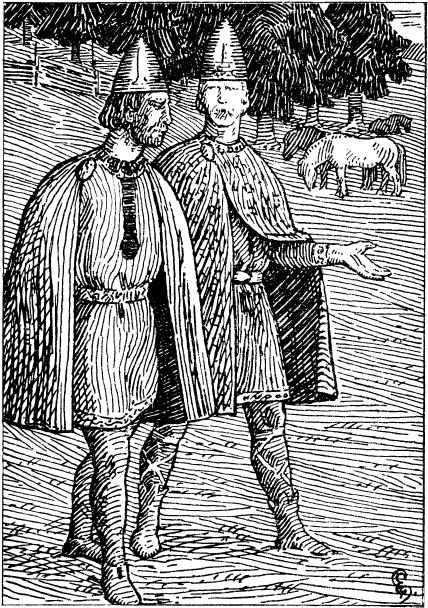|
Tjøtta Church
Tjøtta Church () is a parish church of the Church of Norway in Alstahaug Municipality in Nordland county, Norway. It is located in the village of Tjøtta on the island of Tjøtta. It is the main church for the Tjøtta parish which is part of the Nord-Helgeland prosti (deanery) in the Diocese of Sør-Hålogaland. The stone church was built in a rectangular style in 1851 using plans drawn up by the architect Christian Heinrich Grosch. The church seats about 310 people. History The earliest existing historical records of the church date back to the year 1589, but the church was built before that date. It is speculated that the first church here was constructed on the orders of the local Viking chief Hárek of Tjøtta around the year 1000. Hárek converted to Christianity and was baptized in 999, so building a church would have come next. The church originally had a rectangular nave with a narrower rectangular or square chancel In church architecture, the chancel is the sp ... [...More Info...] [...Related Items...] OR: [Wikipedia] [Google] [Baidu] |
Alstahaug Municipality
Alstahaug is a municipality in Nordland county, Norway. It is part of the Helgeland region. The administrative centre of the municipality is the town of Sandnessjøen. Some of the villages in Alstahaug include Søvika and Tjøtta. Most residents of Alstahaug live in the town of Sandnessjøen which is situated on the island of Alsta. The characteristic Seven Sisters mountain range is found on the eastern part of the island. Local legend has made this chain of peaks into seven sisters, two adjacent peaks representing twin sisters. The island is connected to the mainland via the large Helgeland Bridge along Norwegian County Road 17. The Sandnessjøen Airport, Stokka is located south of Sandnessjøen. The municipality is the 308th largest by area out of the 357 municipalities in Norway. Alstahaug is the 137th most populous municipality in Norway with a population of 7,421. The municipality's population density is and its population has increased by 0.4% over the previous 1 ... [...More Info...] [...Related Items...] OR: [Wikipedia] [Google] [Baidu] |
Deanery
A deanery (or decanate) is an ecclesiastical entity in the Catholic Church, the Eastern Orthodox Church, the Anglican Communion, the Evangelical Church in Germany, and the Church of Norway. A deanery is either the jurisdiction or residence of a dean. Catholic usage In the Catholic Church, Can.374 §2 of the Code of Canon Law grants to bishops the possibility to join together several neighbouring parishes into special groups, such as ''vicariates forane'', or deaneries. Each deanery is headed by a vicar forane, also called a dean or archpriest, who is—according to the definition provided in canon 553—a priest appointed by the bishop after consultation with the priests exercising ministry in the deanery. Canon 555 defines the duties of a dean as:Vicars Forane (Cann. 553–555) from the |
Churches Completed In 1851
Church may refer to: Religion * Church (building), a place/building for Christian religious activities and praying * Church (congregation), a local congregation of a Christian denomination * Church service, a formalized period of Christian communal worship * Christian denomination, a Christian organization with distinct doctrine and practice * Christian Church, either the collective body of all Christian believers, or early Christianity Places United Kingdom * Church, a former electoral ward of Kensington and Chelsea London Borough Council that existed from 1964 to 2002 * Church (Liverpool ward), a Liverpool City Council ward * Church (Reading ward), a Reading Borough Council ward * Church (Sefton ward), a Metropolitan Borough of Sefton ward * Church, Lancashire, England United States * Church, Iowa, an unincorporated community * Church Lake, a lake in Minnesota * Church, Michigan, ghost town Arts, entertainment, and media * '' Church magazine'', a pastoral theology magazin ... [...More Info...] [...Related Items...] OR: [Wikipedia] [Google] [Baidu] |
19th-century Church Of Norway Church Buildings
The 19th century began on 1 January 1801 (represented by the Roman numerals MDCCCI), and ended on 31 December 1900 (MCM). It was the 9th century of the 2nd millennium. It was characterized by vast social upheaval. Slavery was Abolitionism, abolished in much of Europe and the Americas. The First Industrial Revolution, though it began in the late 18th century, expanded beyond its British homeland for the first time during the 19th century, particularly remaking the economies and societies of the Low Countries, France, the Rhineland, Northern Italy, and the Northeastern United States. A few decades later, the Second Industrial Revolution led to ever more massive urbanization and much higher levels of productivity, profit, and prosperity, a pattern that continued into the 20th century. The Catholic Church, in response to the growing influence and power of modernism, secularism and materialism, formed the First Vatican Council in the late 19th century to deal with such problems an ... [...More Info...] [...Related Items...] OR: [Wikipedia] [Google] [Baidu] |
Stone Churches In Norway
In geology, rock (or stone) is any naturally occurring solid mass or aggregate of minerals or mineraloid matter. It is categorized by the minerals included, its chemical composition, and the way in which it is formed. Rocks form the Earth's outer solid layer, the crust, and most of its interior, except for the liquid outer core and pockets of magma in the asthenosphere. The study of rocks involves multiple subdisciplines of geology, including petrology and mineralogy. It may be limited to rocks found on Earth, or it may include planetary geology that studies the rocks of other celestial objects. Rocks are usually grouped into three main groups: igneous rocks, sedimentary rocks and metamorphic rocks. Igneous rocks are formed when magma cools in the Earth's crust, or lava cools on the ground surface or the seabed. Sedimentary rocks are formed by diagenesis and lithification of sediments, which in turn are formed by the weathering, transport, and deposition of existing rocks. M ... [...More Info...] [...Related Items...] OR: [Wikipedia] [Google] [Baidu] |
Churches In Nordland
Church may refer to: Religion * Church (building), a place/building for Christian religious activities and praying * Church (congregation), a local congregation of a Christian denomination * Church service, a formalized period of Christian communal worship * Christian denomination, a Christian organization with distinct doctrine and practice * Christian Church, either the collective body of all Christian believers, or early Christianity Places United Kingdom * Church, a former electoral ward of Kensington and Chelsea London Borough Council that existed from 1964 to 2002 * Church (Liverpool ward), a Liverpool City Council ward * Church (Reading ward), a Reading Borough Council ward * Church (Sefton ward), a Metropolitan Borough of Sefton ward * Church, Lancashire, England United States * Church, Iowa, an unincorporated community * Church Lake, a lake in Minnesota * Church, Michigan, ghost town Arts, entertainment, and media * '' Church magazine'', a pastoral theology magazi ... [...More Info...] [...Related Items...] OR: [Wikipedia] [Google] [Baidu] |
Alstahaug
Alstahaug is a List of municipalities of Norway, municipality in Nordland Counties of Norway, county, Norway. It is part of the Helgeland Districts of Norway, region. The administrative centre of the municipality is the town of Sandnessjøen. Some of the villages in Alstahaug include Søvika and Tjøtta. Most residents of Alstahaug live in the town of Sandnessjøen which is situated on the island of Alsta. The characteristic De syv søstre, Seven Sisters mountain range is found on the eastern part of the island. Local legend has made this chain of peaks into seven sisters, two adjacent peaks representing twin sisters. The island is connected to the mainland via the large Helgeland Bridge along Norwegian County Road 17. The Sandnessjøen Airport, Stokka is located south of Sandnessjøen. The municipality is the 308th largest by area out of the 357 municipalities in Norway. Alstahaug is the 137th most populous municipality in Norway with a population of 7,421. The municipalit ... [...More Info...] [...Related Items...] OR: [Wikipedia] [Google] [Baidu] |
List Of Churches In Sør-Hålogaland
This list of churches in Sør-Hålogaland is a list of the Church of Norway churches in the Diocese of Sør-Hålogaland in Norway. It includes all of the parishes in Nordland county. The diocese is based at the Bodø Cathedral in the city of Bodø (town), Bodø in Bodø Municipality. The list is divided into several sections, one for each deanery (; headed by a Provost (religion), provost) in the diocese. Administratively within each deanery, the churches within each municipality elects their own church council (). Each municipality may have one or more parishes () within the municipality. Each parish elects their own councils (). Each parish has one or more Parish church, local church. The number and size of the deaneries and parishes has changed over time. Bodø domprosti This arch-deanery () is home to the Bodø Cathedral, the seat of the Bishop of the Diocese of Sør-Hålogaland. Bodø domprosti covers the five municipalities of Bodø Municipality, Bodø, Gildeskål Municipa ... [...More Info...] [...Related Items...] OR: [Wikipedia] [Google] [Baidu] |
Norwegian Directorate For Cultural Heritage
The Directorate for Cultural Heritage ( or ''Direktoratet for kulturminneforvaltning'') is a etat, government agency responsible for the management of cultural heritage in Norway. Subordinate to the Norwegian Ministry of the Environment, it manages the ''Cultural Heritage Act (Norway), Cultural Heritage Act of June 9, 1978''. The directorate also has responsibilities under the Norwegian Planning and Building Law. Cultural Heritage Management in Norway The directorate for Cultural Heritage Management is responsible for management on the national level. At the regional level the county municipality (Norway), county municipalities are responsible for the management in their county. The Sami Parliament of Norway, Sami Parliament is responsible for management of Sámi people, Sámi heritage. On the island of Svalbard, the Governor of Svalbard maintains management responsibilities. For archaeological excavations there are five chartered archeological museums. History The work with c ... [...More Info...] [...Related Items...] OR: [Wikipedia] [Google] [Baidu] |
Chancel
In church architecture, the chancel is the space around the altar, including the Choir (architecture), choir and the sanctuary (sometimes called the presbytery), at the liturgical east end of a traditional Christian church building. It may terminate in an apse. Overview The chancel is generally the area used by the clergy and choir during worship, while the congregation is in the nave. Direct access may be provided by a priest's door, usually on the south side of the church. This is one definition, sometimes called the "strict" one; in practice in churches where the eastern end contains other elements such as an ambulatory and side chapels, these are also often counted as part of the chancel, especially when discussing architecture. In smaller churches, where the altar is backed by the outside east wall and there is no distinct choir, the chancel and sanctuary may be the same area. In churches with a retroquire area behind the altar, this may only be included in the broader defi ... [...More Info...] [...Related Items...] OR: [Wikipedia] [Google] [Baidu] |
Nave
The nave () is the central part of a church, stretching from the (normally western) main entrance or rear wall, to the transepts, or in a church without transepts, to the chancel. When a church contains side aisles, as in a basilica-type building, the strict definition of the term "nave" is restricted to the central aisle. In a broader, more colloquial sense, the nave includes all areas available for the lay worshippers, including the side-aisles and transepts.Cram, Ralph Adams Nave The Catholic Encyclopedia. Vol. 10. New York: Robert Appleton Company, 1911. Accessed 13 July 2018 Either way, the nave is distinct from the area reserved for the choir and clergy. Description The nave extends from the entry—which may have a separate vestibule (the narthex)—to the chancel and may be flanked by lower side-aisles separated from the nave by an arcade. If the aisles are high and of a width comparable to the central nave, the structure is sometimes said to have three nave ... [...More Info...] [...Related Items...] OR: [Wikipedia] [Google] [Baidu] |
Hárek Of Tjøtta
Hårek of Tjøtta (965 in Tjøtta – 1036) was a Norwegian farmer and local chieftain. He was a son of the skald, Eyvindr skáldaspillir, who ruled from Tjøttagodset (a large manor). Hårek resided at Tjøtta in Nordland (north Norway), and had significant influence in the district of Hålogaland. He participated in the Battle of Stiklestad in 1030, where his farmer army defeated Olaf Haraldsson. Six years later when visiting king Magnus Olavsson I also known as Magnus the Good (the son of Olaf Haraldsson) in Trondheim Trondheim ( , , ; ), historically Kaupangen, Nidaros, and Trondhjem (), is a city and municipality in Trøndelag county, Norway. As of 2022, it had a population of 212,660. Trondheim is the third most populous municipality in Norway, and is ..., he was killed by axe in 1036 by rival chieftain Åsmund Grankjellsson, and thus the former king's son got his revenge. Further reading * Birgitta Berglund (1995)Tjøtta-riket: en arkeologisk undersø ... [...More Info...] [...Related Items...] OR: [Wikipedia] [Google] [Baidu] |






